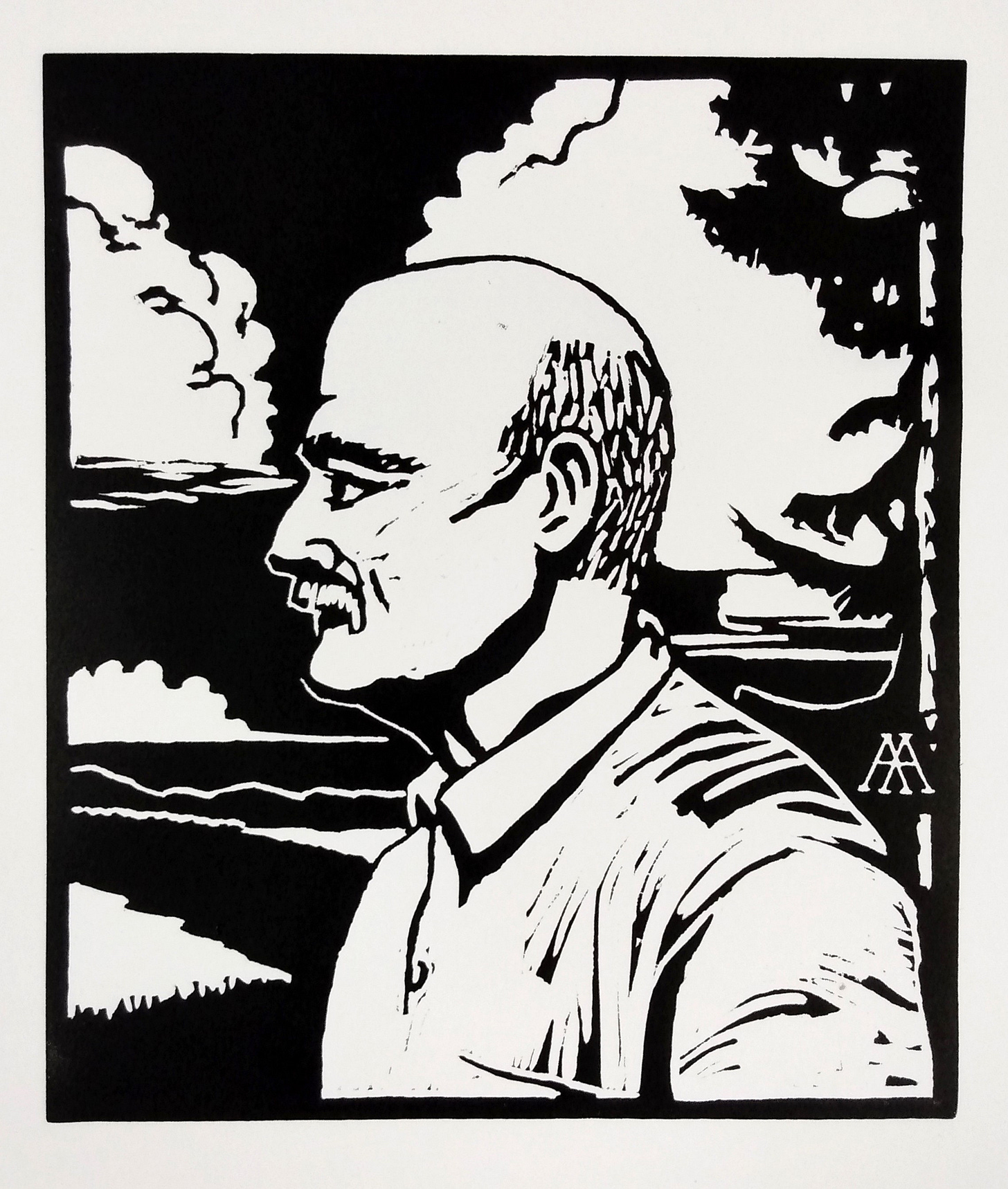Exclusive preview of new linocuts
A trio of new linocut prints of authors will be launched on 1 October.
Following the success of the author linocut prints launched on 1 July, I am pleased to reveal the next set of prints. They will be launched on 1 October, for fulfilment in October/November. In this post I shall show the new prints and some of the preparation for them.
The first stage is selecting which authors are suitable for the series. I am focusing on dissident authors who could be called reactionaries, rebels, conservatives and counter elites. Some of the authors’ writings I know well, others only slightly. I move between figures who are meaningful for me and those who are highly regarded by others. The chosen author’s source images are assessed. The chosen test images have to be striking images, preferably typical or recognisable, but not necessarily iconic. In fact, the iconic image is sometimes unsuitable because its familiarity can render it benign or banal. The best image is one that is identifiable but also new. This is often a difficulty when one deals with an obscure author with relatively few accessible photographic portraits. In the case of Joseph de Maistre, I worked from a painted portrait.
I will draw the subject a number of times, using different sources, becoming familiar with the appearance. I will then make alterations. These are mainly simplifications, as the linocut requires radical reduction in detail and form, but it may also include adding a new background. Above you see the profile of Knut Hamsun placed in a Scandinavian landscape appropriate to the themes and locales of the Norwegian writer’s books. Once the design is worked out, a test is done in ink wash. This is black only, with no grey. This is to simulate the appearance of a linocut and intended to see how the design works. Sometimes there will be no changes between this and the transference on to the plate, although there are generally a couple of alterations, usually matters of shading. Occasionally, the drawing will reveal that the design is weak and will have to be abandoned.
The design is transferred from the ink painting to the surface of a lino plate, which is then cut. The cut plate is inked, covered with paper and run through a press. The resultant proof is then checked to see it conforms with the artist’s expectations. When the proofs are dry, they are signed and numbered by the artist, assigning each a unique number, “1/55” and so on. Later, the plate is destroyed so that there can be no extra prints. The artist usually keeps a few for himself. These are marked “A/P” (artist’s proof).
These prints will be on two types of paper, a very clean, thick, slightly off-white paper made in Germany called “Zerkall” and a thinner, slightly creamy, speckled paper made in Japan called “Satogami”. The Satogami paper is more expensive and there are fewer proofs on this paper, making those rarer. That is why the Satogami proofs are slightly more expensive than the Zerkall ones.
Here are the three new prints to be launched in the autumn.
Julius Evola, Italian philosopher and cultural critic, linocut, edition 50 proofs, image 20 x 15.3 cm, paper (Zerkall) 26.5 x 24 cm, paper (Satogami) 35.5 x 25.5 cm
Knut Hamsun, Norwegian author, linocut, edition 50 proofs, image 23 x 20 cm, paper (Zerkall) 35 x 26.5 cm, paper (Satogami) 35.5 x 25.5 cm
Gabriele d’Annunzio, Italian novelist, linocut, edition 50 proofs, image 23 x 17 cm, paper (Zerkall) 35 x 26.5 cm, paper (Satogami) 35.5 x 25.5 cm
These prints will be available exclusively from Imperium Press. To place orders, visit the website on or after 1 October 2023 here: https://www.imperiumpress.org/merch/posters-and-prints/







